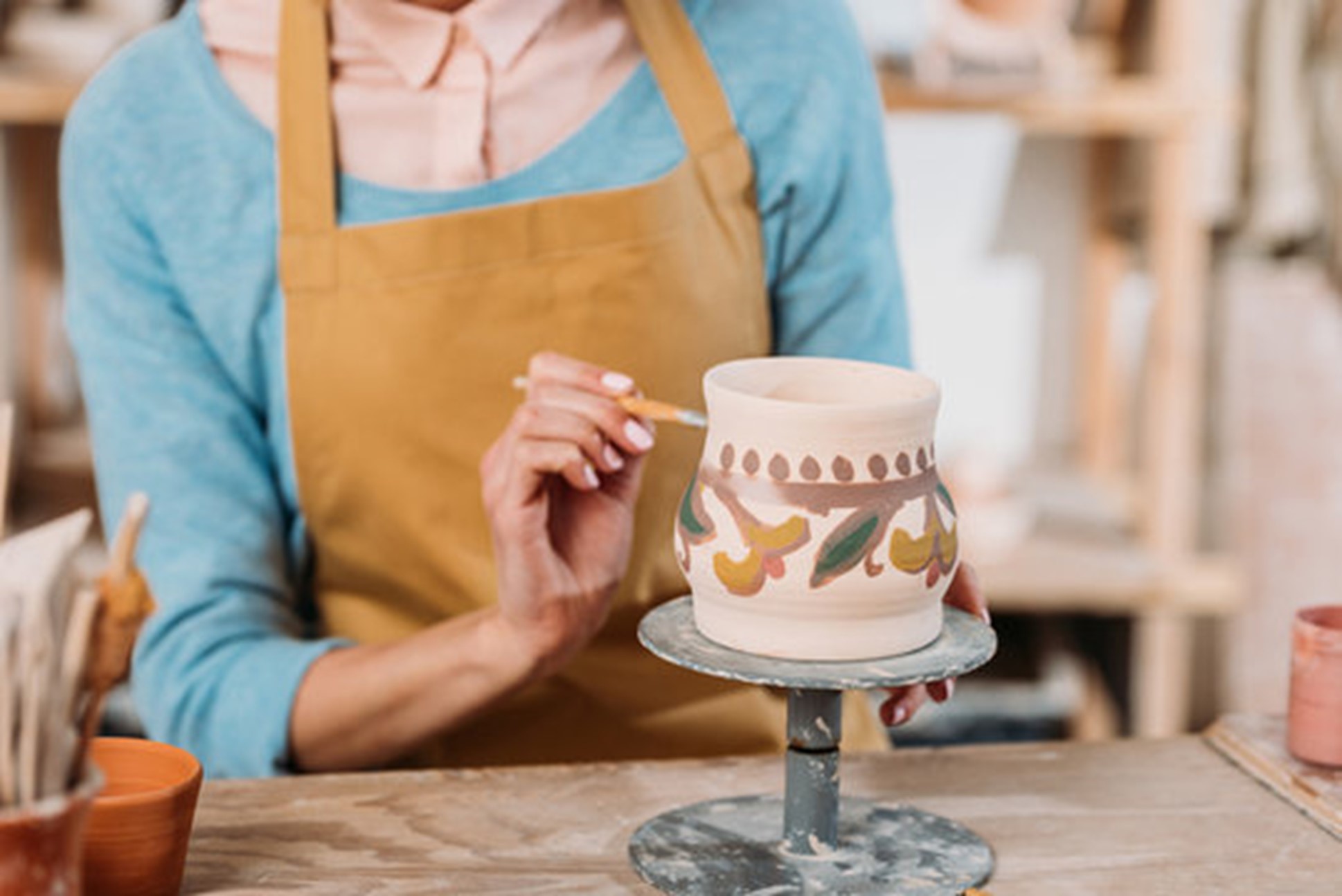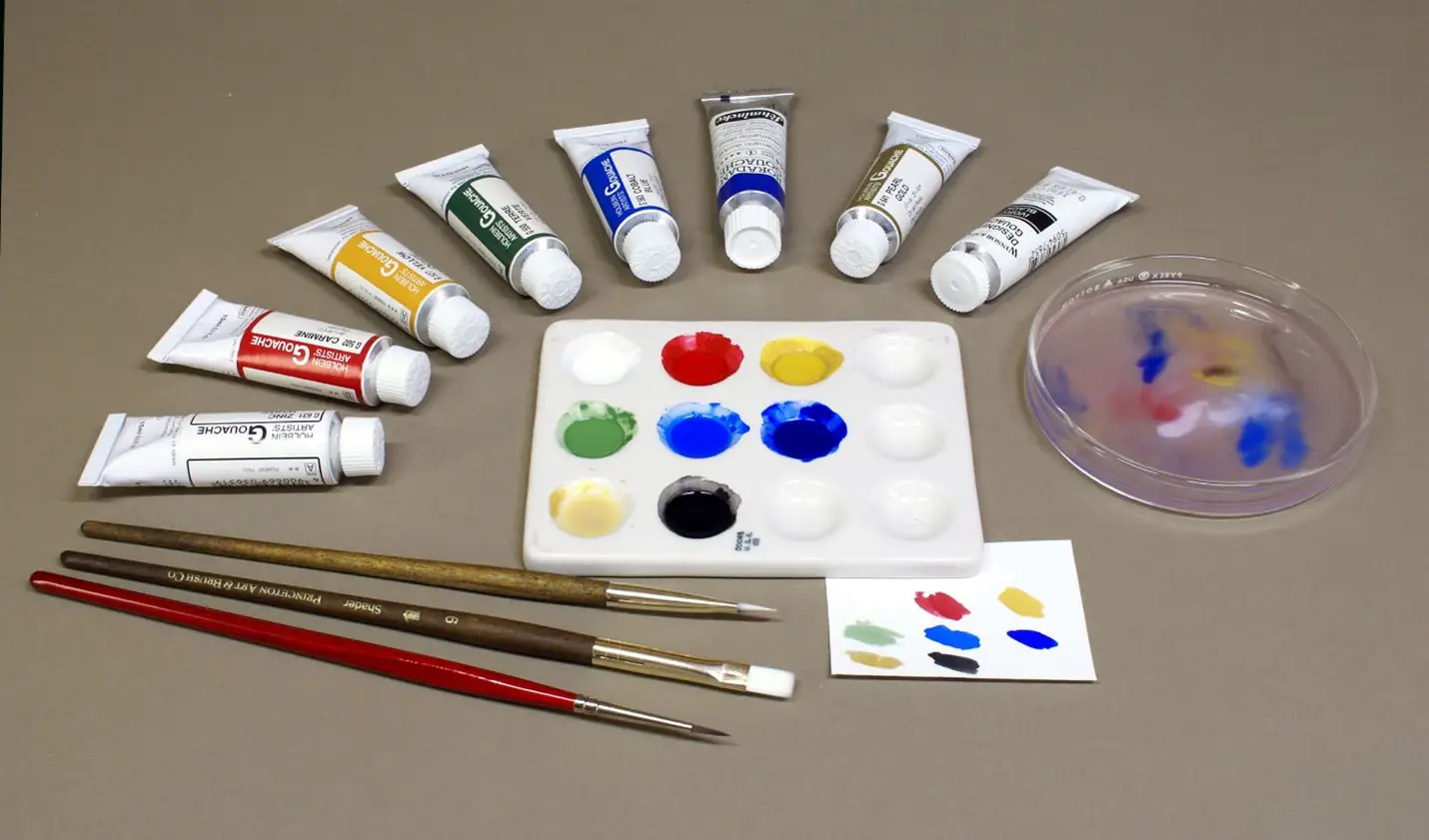Gouache is an opaque watercolor that typically contains pigment, water, and a binding agent, which accounts for its similarity to watercolor paint in application and consistency. Due to this, it dries to a flat, matt color, reproducing amazingly well, making it perfect for commercial art, illustrations, and pottery.
The artist’s gouache uses only the best pigments to create dazzling, vibrant colors that are lightfast, smooth, and solid. As a result, it is highly well-liked by students and professional potters alike. Moreover, most universities will include it as one of the necessary materials because it dries quickly, is bold, and doesn’t need a medium.
You should consider incorporating gouache into your pottery projects because it is an underappreciated but potent media. Read on to discover more about gouache and how to utilize it to your advantage as a pottery artist.
What Is Gouache?
Gouache is an opaque watercolor that utilizes the same pigments and gum arabic binder as a watercolor. But it has white added to make up for the transparency of the watercolor. White gouache is also frequently utilized to create striking highlights in watercolor paintings. You can apply it directly onto any surface from the tube or dilute it with water, but it won’t allow you to add as many layers as pure watercolor.
Starting with this well-liked and adaptable paint is simple. You can apply gouache paint with paint brushes and on the surface too. You can even use it on pottery. However, in contrast to acrylic, it is not waterproof when dry. The sheerness is the sole difference between gouache and watercolor. When you use gouache, the surface of your pottery underneath will not be as apparent as ordinary watercolors.
There are primarily two kinds of gouache paint that you can use. Traditional gouache is one of them, and the other is acrylic gouache. The primary distinction between the two is that the acrylic gouache has an acrylic binder added to the paint to make it opaque and waterproof.
Acrylic gouache is a good option if you like layering your pot and more vibrant color hues. So, you can try the HIMI Gouache Paint Set to create brilliant color blending. Containing 24 unique colors with three paint brushes and palettes, this gouache paint gives you an infinite color pallet to work with.
How To Use Gouache?
Gouache paints are highly flexible, and you may use them in various ways. Gouache is an excellent medium for rapid sketching or drawing on pot if you like to explore your creative side since it dries quickly. Gouache painting is easy to produce, but remember that colors seem more profound when wet. Once dry, they will look lighter and soft.
Gouache is often not applied directly from the tube. If you want to apply it more precisely, as when using watercolors, you usually first dilute it with a bit of water. However, you may also use it dry, which is ideal for dry brushing when used on pottery surfaces. It is generally utilized while working on layering pottery pieces.
What Application Techniques To Use With Gouache?
Gouache is quite adaptable, and you can choose many different styles. It allows you to try new things, explore, and play with your gouache paints.

Here are some techniques you can use to get started with gouache.
Technique |
How To Implement It? |
Dry Brushing |
This method produces scratchy brush strokes by applying a small quantity of paint to a dry paintbrush. To do this, dab your brush in paint, remove any excess, and then lightly stroke your brush across your paper. |
Splatters |
To add the appearance of stars or water spray, flick gouache over your artwork. Using white gouache, this technique is frequently used on top of galaxy arts on pottery surfaces. |
Color Blending |
Mixing colors directly on your pottery surface may get intriguing effects for subtle or dramatic color shifts. To achieve a seamless color transition, paint a pottery surface with one color, then use another color to paint the edges until the colors start to blend. |
Washes |
A wash is a light coating of color that you can produce with watered-down ink or watercolors. Add water to the gouache paints and distribute it evenly across your pottery surface to get this look. |
Layering |
You can use gouache to paint opaque lines on top of opaque or transparent backgrounds. However, let the preceding coat dry first to prevent discoloration. Next, draw a sequence of circles using various colors, moving from translucent to opaque. Try to overlap the circles while varying the transparency. You can add more water to gouache paint to make it more transparent. Always dry the pot before applying paint to the surface. |
What Makes Gouache Unique For Pottery?
Gouache’s pigment particles are bigger and more closely packed than watercolors. Gouache is opaque because of its large, densely packed pigments, which leave less room for light to pass through. Some use white chalk as an addition to make it opaque.
Gouache is an excellent choice for potters who want to guarantee precise replication of their work because of its opacity. However, it is so good at creating the radiant qualities that transparent watercolorists are so fond of because of the same characteristic.
Gouache allows you to paint over previously dried paint without affecting the underlying colors. It is opaque and has a matte finish. Therefore, it is excellent for painting tiny details and large areas of pots. Even years later, dried gouache paint can be revived. Due to this, it’s crucial to varnish finished artwork to protect it from deterioration.
In the past, poster art, comic book drawings, and commercial posters were the most popular uses for gouache. However, potters have now started to use gouache on pottery pieces. It is soluble in water like acrylic paint but doesn’t dry out or cake on paintbrushes. With gouache, cleaning up is simpler as you can use just water to remove stains and excess paint.
Winding Up
Gouache provides numerous opportunities to experiment and produce intricate drawings and images on your pottery. This paint is ideal for beginners since it is a versatile medium with several advantages. You can apply it in various methods, including washes, blends, or dry brushes.








